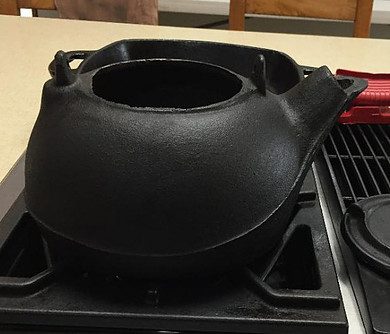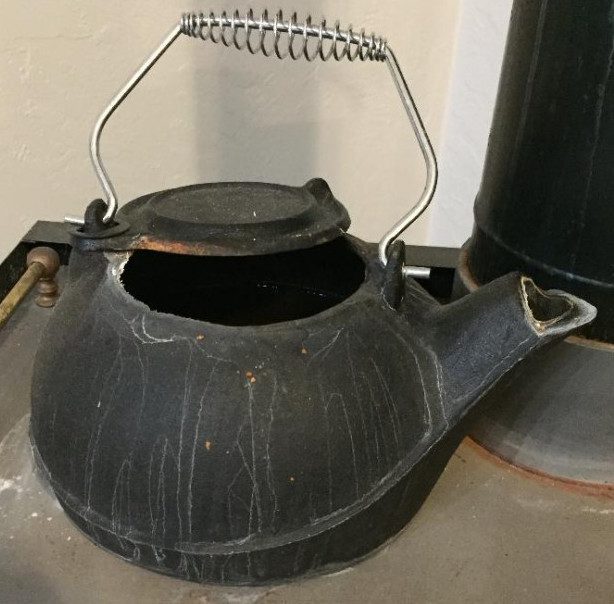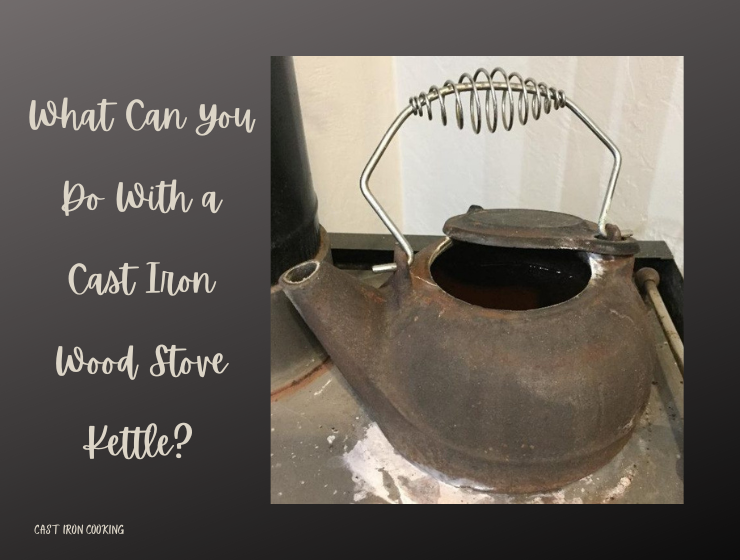What can you do with a cast iron wood stove kettle?
This is a question people are asking.
If you have a wood stove kettle, can you heat up water for drinking or brewing tea?
What if you don’t have a wood stove? Are there any other uses for it?
And how are wood stove kettles different from cast iron teapots?
These are all great questions.
So, let’s look at some various uses for you to consider.
Table of Contents
What Can You Do With a Cast Iron Wood Stove Kettle?
The cast iron wood stove kettle essentially only has one intended use, and that’s to add moisture to the air. As the wood burner heats up the kettle with water, steam is released. Steamer is another name for this type of kettle. However, not everyone who has a kettle has a wood stove. In that case, you can get creative and turn it into a planter or potentially drink or use the hot water to brew tea.
Difference Between a Cast Iron Teapot and a Kettle
Sometimes cast iron wood stove kettles are called teapots, but not many people would use one that way.
Most people who use cast iron teapots have a Japanese one.
And the difference between them is the cast iron Japanese teapot is enameled on the inside.
The enameling protects the iron from rust and flaking. It also keeps the iron from leaching into the liquid.
1. Use It As a Humidifier on Your Wood Stove
The most common use for a cast iron wood stove kettle is setting it on top of the wood burner and filling it with water.
While the stove heats the water, it sends moisture into the room.
I have two of them that sit on top of our woodburner stove. Both do a fantastic job of humidifying.
We have a big open living room to the kitchen and loft above.
So, a couple of years ago, we got a second one, and the results have been phenomenal.
If you have a wood stove, I highly recommend having a cast iron kettle.
2. Put a Plant in It
But what if you have a kettle and not a wood stove?
This was the case for one person on a forum. They had picked one up at a swap meet for a buck.
It was rusty (like mine), and they wanted to know if it was worth seasoning.
The responses didn’t center around whether it should be seasoned but what it was.
It was a humidity kettle or steamer, and one person said it should not be used for food or drink.
Implying it wasn’t worth seasoning?
However, two responses caught my attention.
One was from a person who also had a kettle and used it as a planter. She placed the pot in the kettle for purely decorative purposes.
I thought that sounded like a fantastic idea.
Another response kind of debunked the person who said you shouldn’t use it for food or drink.
I say kind of because they weren’t recommending drinking the water; they simply said you can. And then went on to explain.
3. Drink the Water
Drinking the water sounds a bit disgusting because I have seen the water in my cast iron kettle, and it does not look appetizing.
It has the color of rust, especially in my older one. And tiny black flakes floating around.
The person in the forum said the same thing:
- The water will be discolored.
- Iron and rust will leech into the water.
- The cast iron will absorb the calcium oxide from the water and cause black flakes to get in the water.
None of these factors make the water harmful to you, though.
On the other hand, that doesn’t mean you want to drink it that way.
Though it might come in useful when camping.
For example, you could heat the kettle full of water over the fire for making tea.
Now, let’s go back to the person who wanted to know it is was worth seasoning.
I came across this video showing you how to cure (or season) your kettle (steamer).
It wasn’t so you could drink from it, but for keeping it nice-looking.
If your kettle is displayed on your wood stove or as a planter, it may as well look good.
How to Properly Cure Your Cast Iron Steamer
Seasoning My Kettle
Like I said earlier, I have two kettles. One is between twenty and thirty years old, and the other one is only two years old.
So, I decided to season the newer one. I figured the rust would be easier to remove.
Removing the rust is vital as a first step.
Since the kettle is already black, it has a finish on it.
Because iron is gray, not black.
Now, whether it has a factory pre-seasoning, I don’t know.
But whatever it is, even my old kettle is still black after all this time (except where you see rust and calcium build-up, lol).
The same is true for our wood stove, which is also cast iron.
What would happen if I cleaned the rust off the best I could, then seasoned it?
- First, I used steel wool to clean both the inside and outside of the kettle.
- Second, I preheated the oven to 450°F and covered only the outside of the kettle with Grapeseed oil. I was unable to get all the rust out of the inside. I have no intention of using it for drinking water or making tea.
- Third, I baked it for one hour, and the pictures show the before and after.


I am pleased with how it turned out, but now I have to figure out what I will do with the other one.
In addition, I have my doubts that it will last. Just like with seasoning cast iron cookware, it will have to be done periodically.
But I have no doubt that regardless of what the kettle looks like, it will last.
RELATED > > > > > Why is Cast Iron Cookware Black?
Final Thoughts
Hopefully, you have enjoyed learning about what you can do with a cast iron wood stove kettle.
If you have a wood stove, the most obvious thing is to use it as intended:
Set it on top of the wood burner with water in it and let the stove’s heat cause the water to steam and put moisture in the air.
However, there are at least two other things you can do with one.
Particularly if you don’t have a wood stove, the kettle can make a unique planter.
And if you so choose, you can drink the water or use it to make tea.
What do you think about these ideas? Do you have others you’d like to share?
Or how do you use your cast iron kettle?
Let me know in the comments below.
And if you would like to know more about a cast iron kettle for wood stoves, check out my review.

